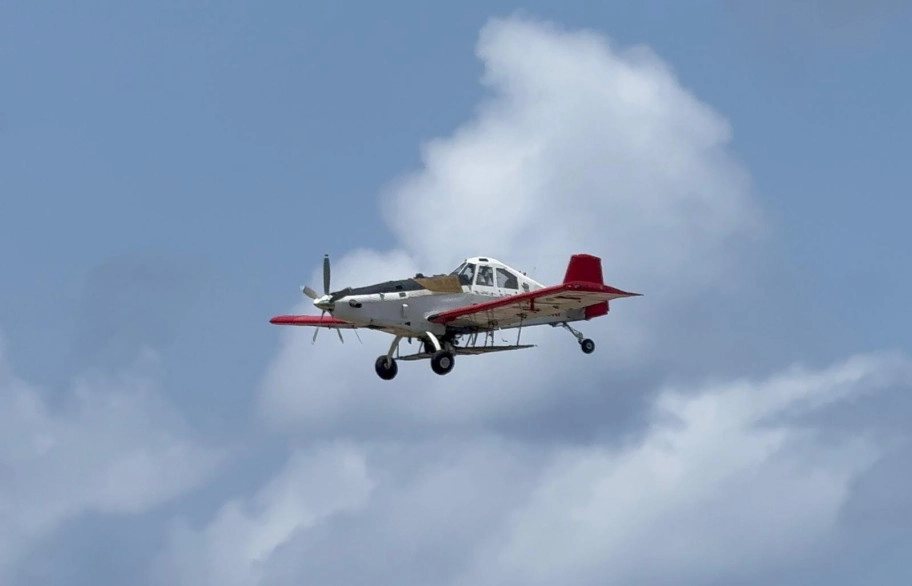Aircraft larviciding under way across the Cayman Islands
The Mosquito Research and Control Unit has begun larviciding operations across the Cayman Islands today as part of ongoing efforts to reduce mosquito populations and stay ahead of future outbreaks. Treatments are now under way in Grand Cayman and will continue over the next two weeks. Once Grand Cayman has been completed, operations will move to Cayman Brac and Little Cayman, with aerial larviciding scheduled for early-mid December.
This year has presented substantial challenges for mosquito control, due largely to frequent rainfall and weather conditions that support rapid breeding. Despite this, MRCU continues to work proactively to manage mosquito populations effectively.
Some residents may hope for the complete eradication of mosquitoes, however that is not practical. Mosquitoes form part of the natural environment and Cayman’s climate ensures they will always exist. What MRCU focuses on is reducing how many mosquitoes successfully develop and emerge as adults. Our teams work year round to keep numbers as low and comfortable as possible while ensuring every treatment protects public health and the environment. Larviciding plays a vital role in this process, targeting mosquitoes before they mature. Every female that emerges is capable of laying two to three hundred eggs, remaining dormant until rain provides the chance to develop. Reducing larvae now prevents future population spikes.
During larviciding, MRCU often experiences a rise in public calls and enquiries. Many residents contact the unit unsure about the aircraft’s movements, wondering if it is safe, why it flies so low, why multiple passes are made, or why flights happen during the day. These flight patterns are deliberate and essential for effective treatment. The aircraft must fly low to reach breeding sites, and several passes are required to ensure full coverage. The products used are safe for the environment and public health, even when the aircraft flies directly overhead.
In the weeks ahead, the public will see low flying aircraft over Grand Cayman as the operation continues. Once completed, the aircraft will move to Cayman Brac and Little Cayman to carry out the same work. Weather remains an important factor in aerial treatment and higher winds or prolonged rain may delay progress. The team will work steadily as conditions allow and will share further updates as needed.
MRCU thanks the public for its understanding and support as this essential work continues.
To learn more, visit the MRCU website and social media platforms.
Latest News
-
MHES Receives Grant to Propagate Native PlantsEnvironmen...27 November 2025, 08:33 AM
-
Legal Services Act to Be Fully Commenced 1 January 2026Police/Cou...27 November 2025, 05:10 AM
-
Police Conduct Day of Action in Cayman BracPolice/Cou...27 November 2025, 05:05 AM
-
Cayman Islands Chamber of Commerce Launches 2025 Mentoring Cayman Programme at Opening ReceptionEducation27 November 2025, 05:02 AM
-
MHES Issues Travel Advisory on Leptospirosis Outbreak in JamaicaHealth27 November 2025, 04:57 AM


